Abstract
The distribution of ticks of the Ornithodoros moubata complex in different habitats in Malawi, particularly pigsties and houses, was established from a four-phase survey undertaken between 1982 and 1985. The first phase consisted of preliminary interviews, the second phase consisted of a questionnaire to Veterinary Assistants (VAs) in rural areas, the third involved tick collections by VAs and the fourth involved both interviews and tick collections by members of the Central Veterinary Laboratory, Lilongwe. The area in which O. moubata is found in pigsties includes much of the African swine fever (ASF) enzootic area, and it seems likely that the enzootic area could become larger in future. The occurrence of O. moubata in warthog habitats was also investigated.
Full text
PDF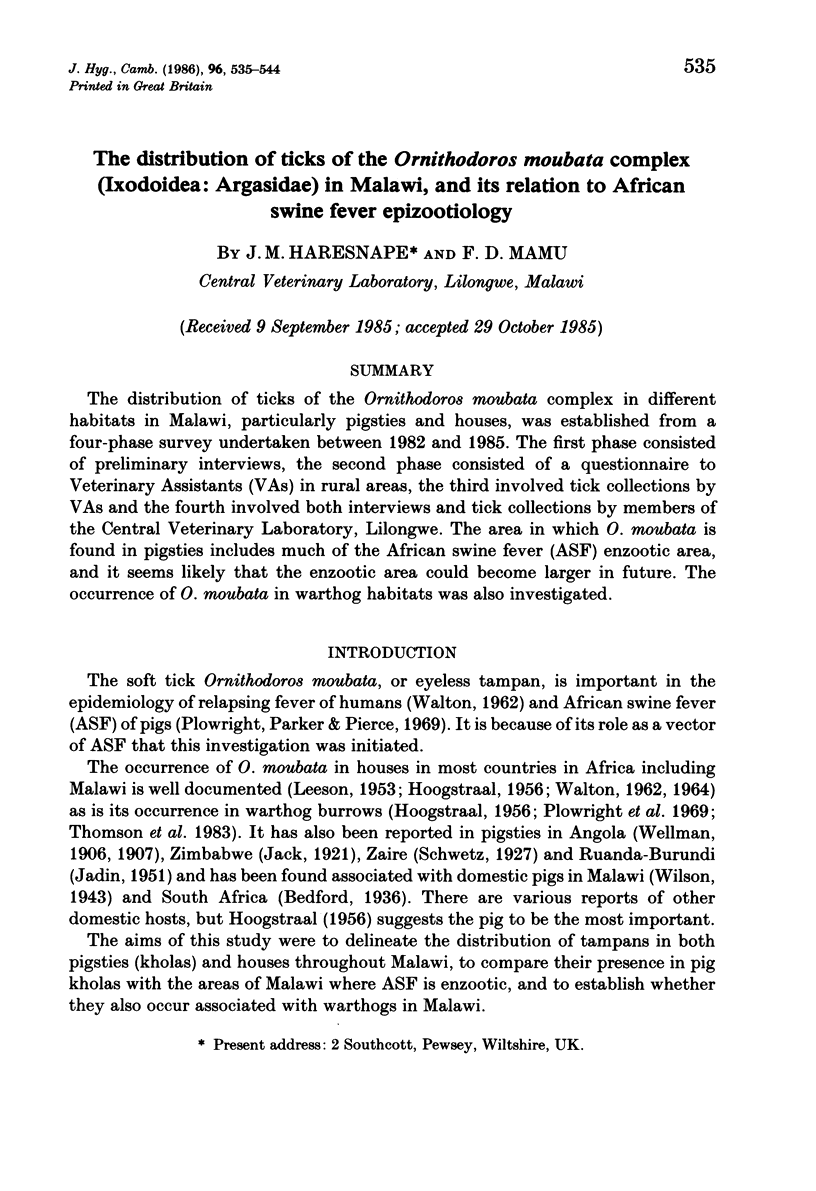
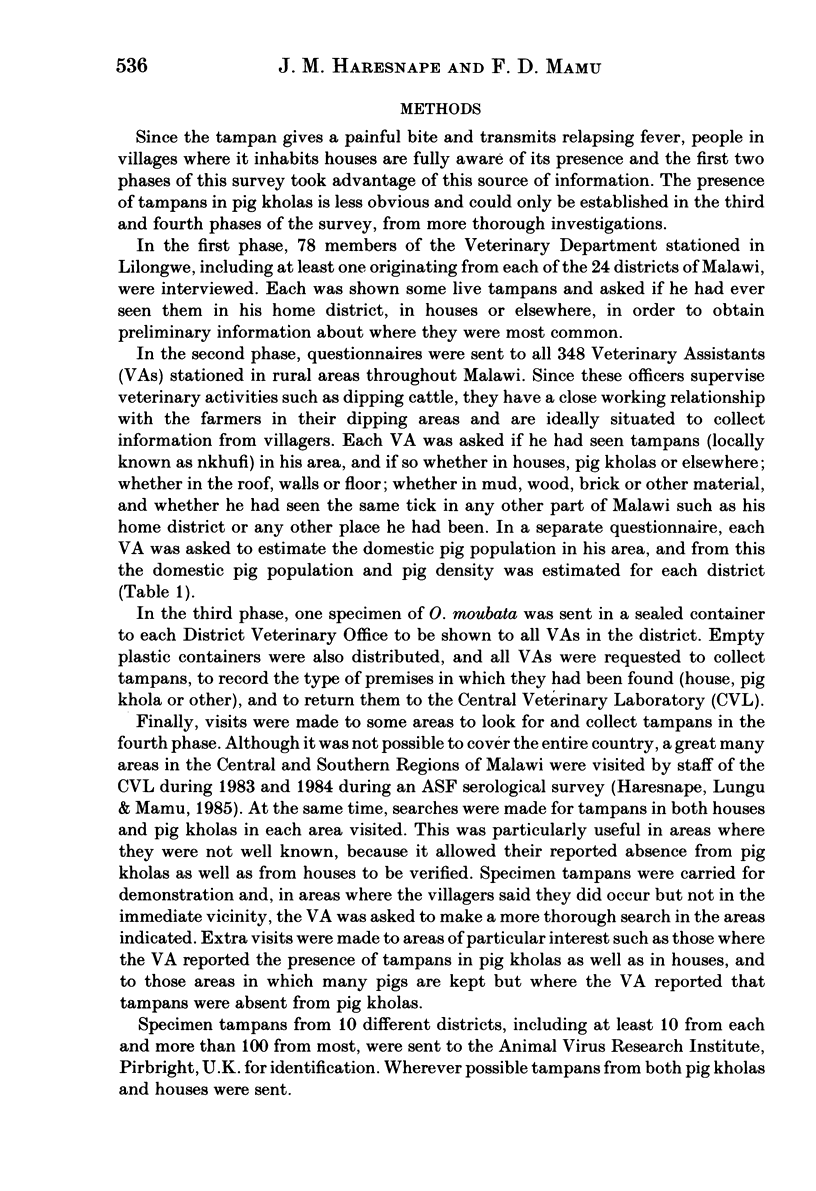
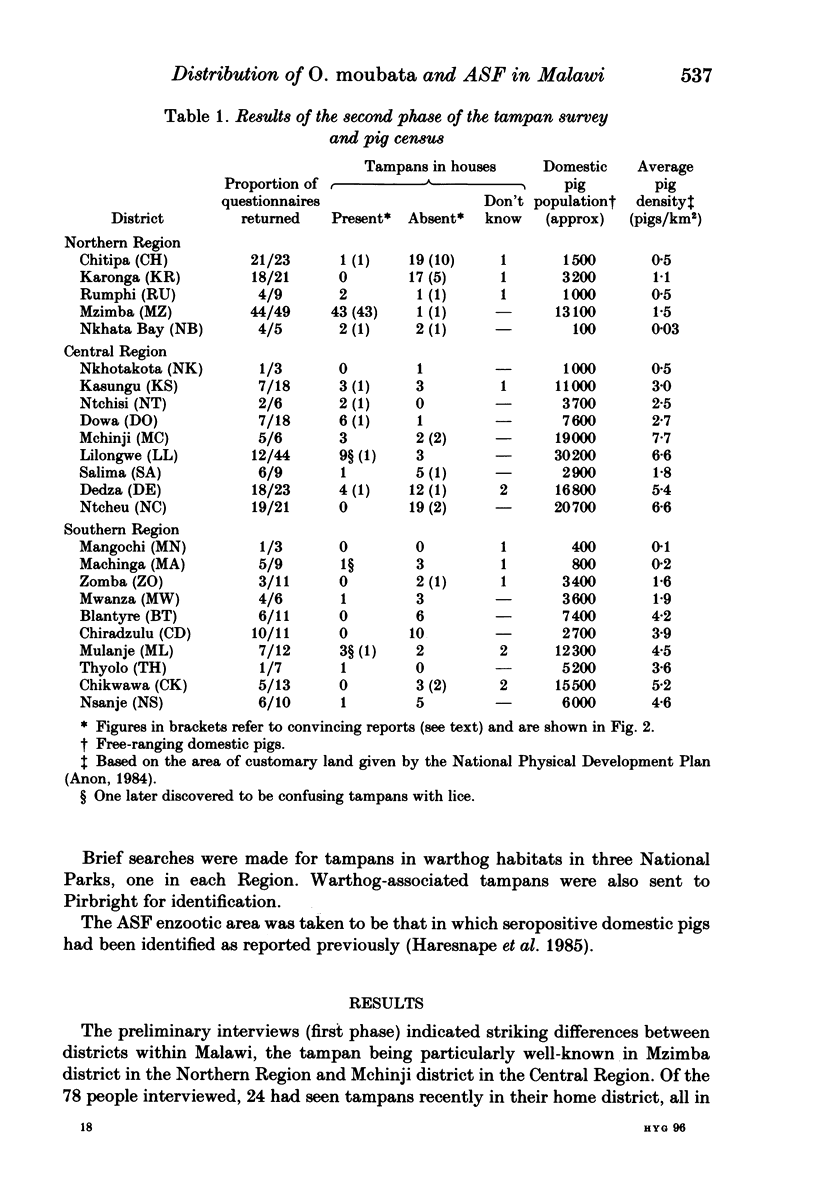
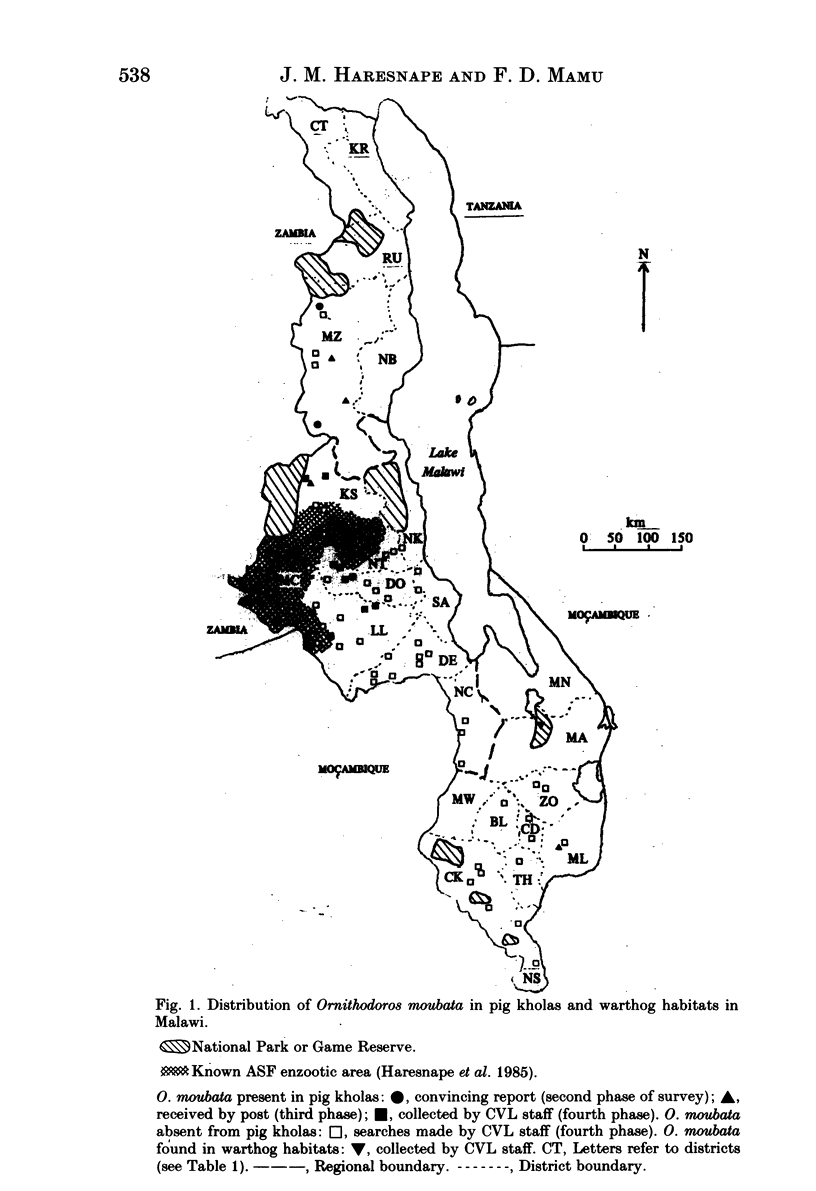
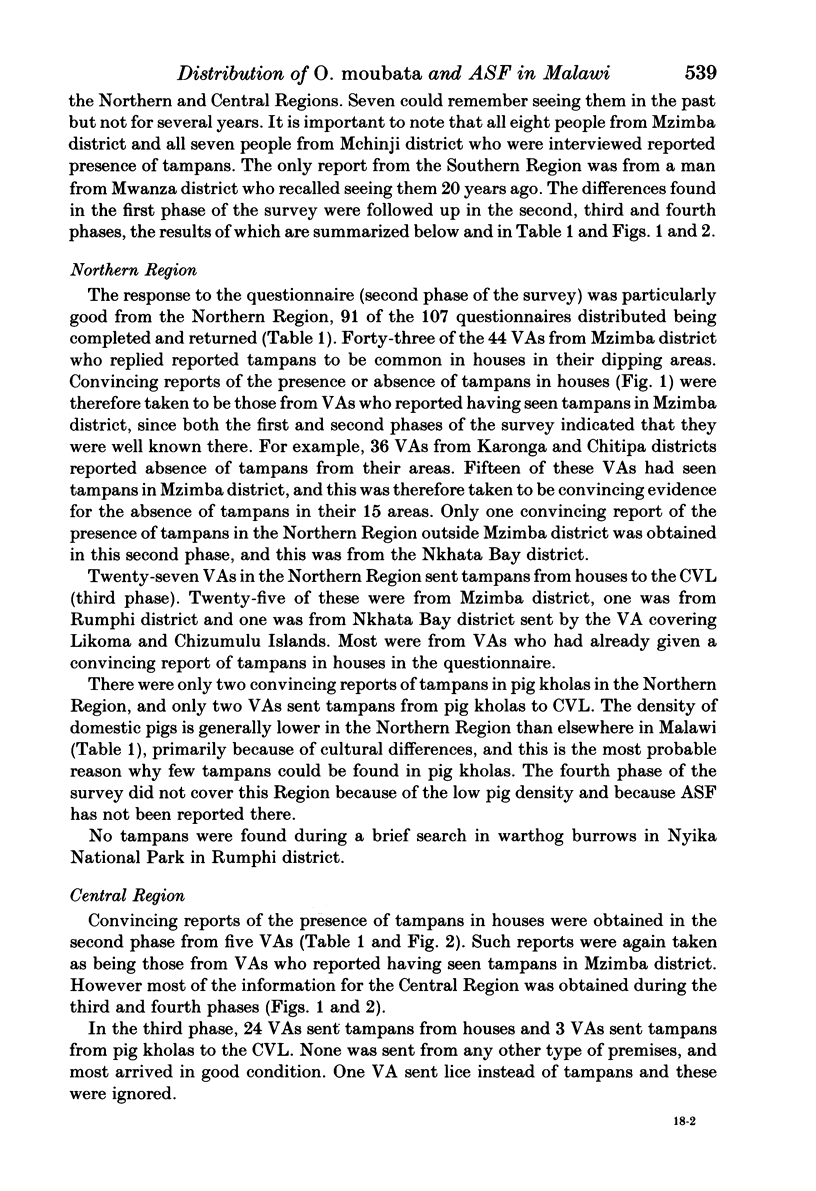
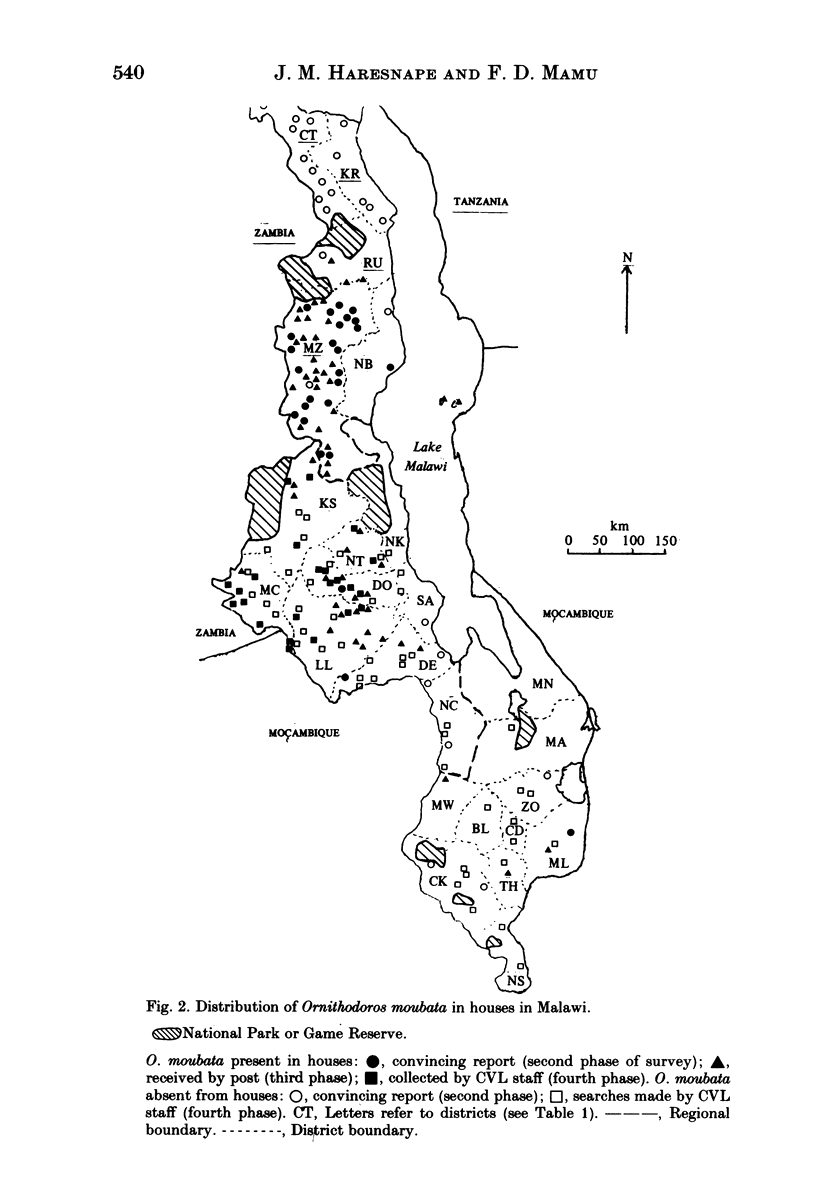
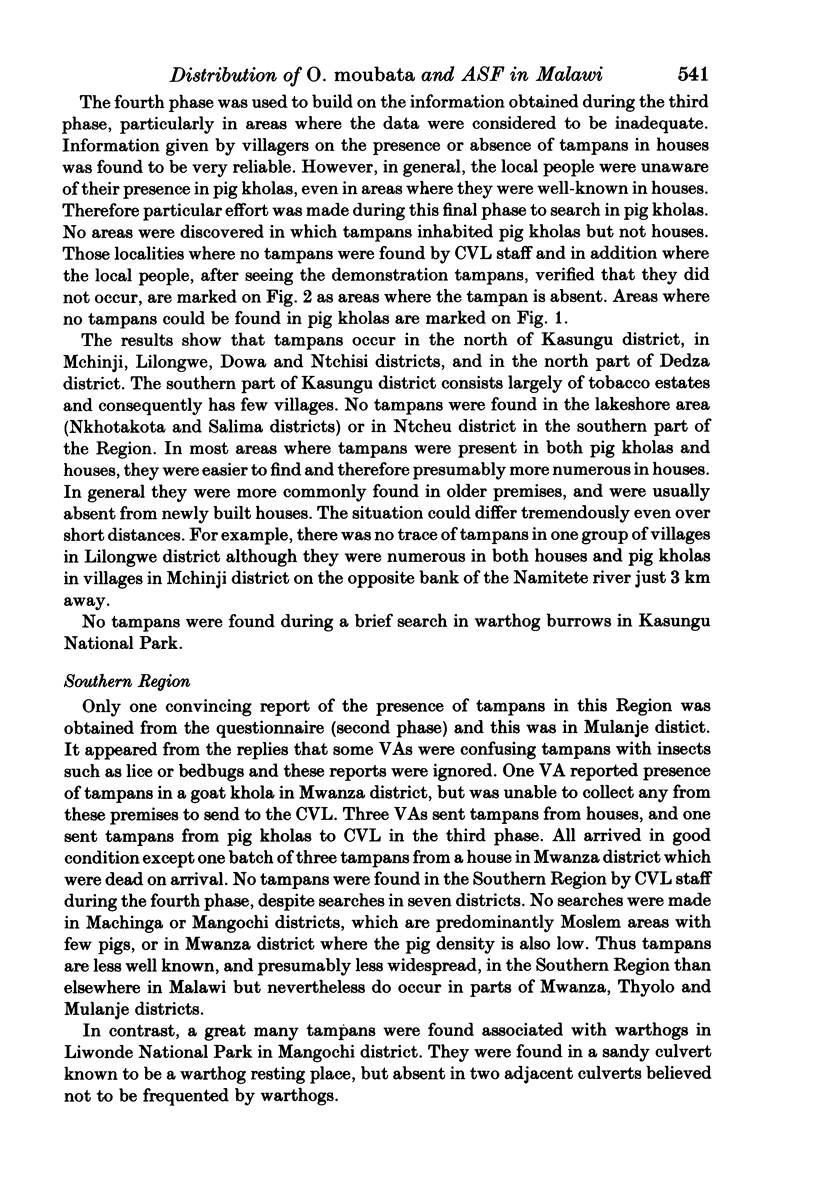
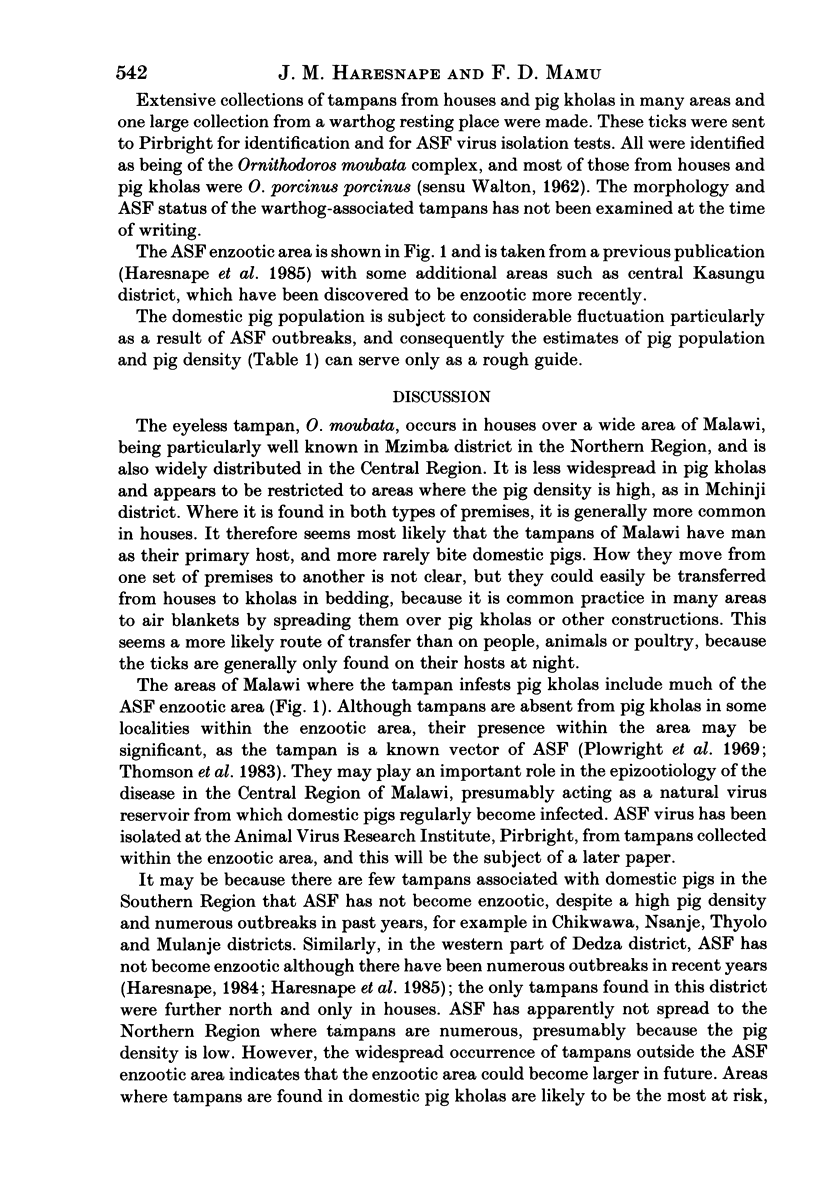
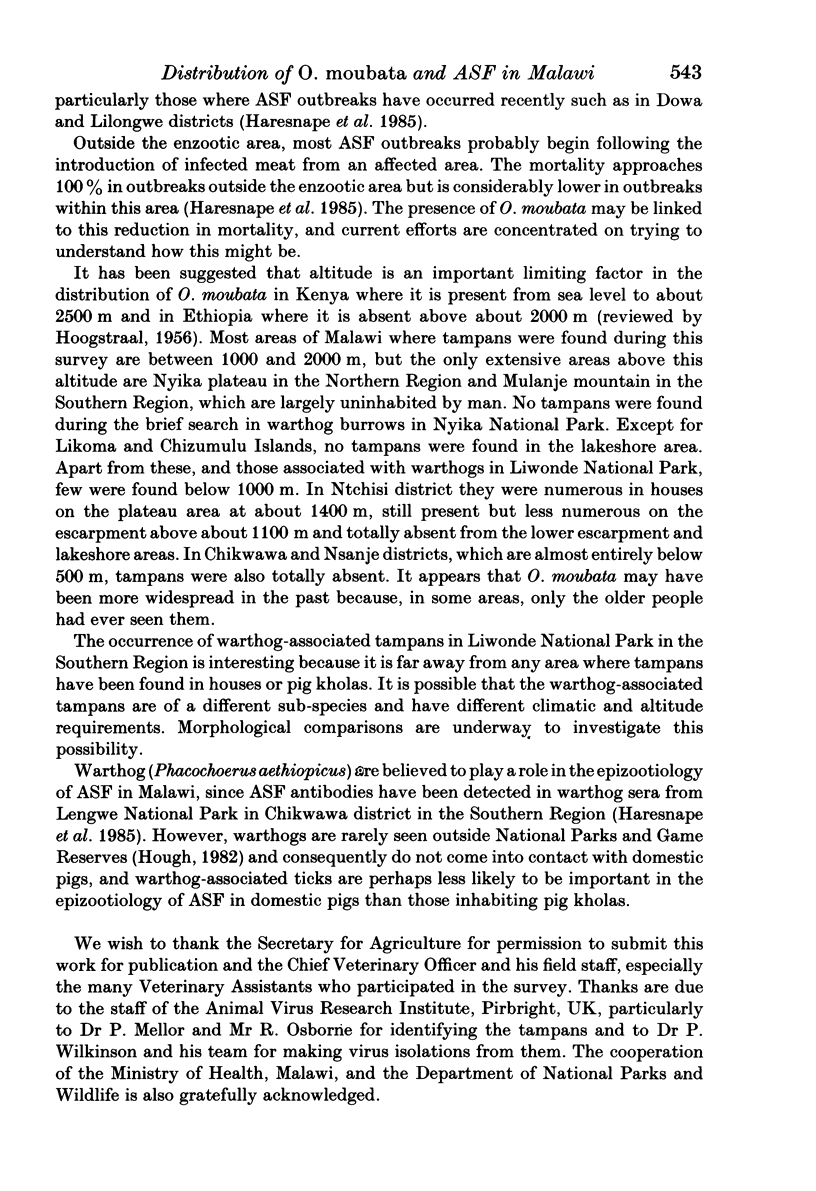
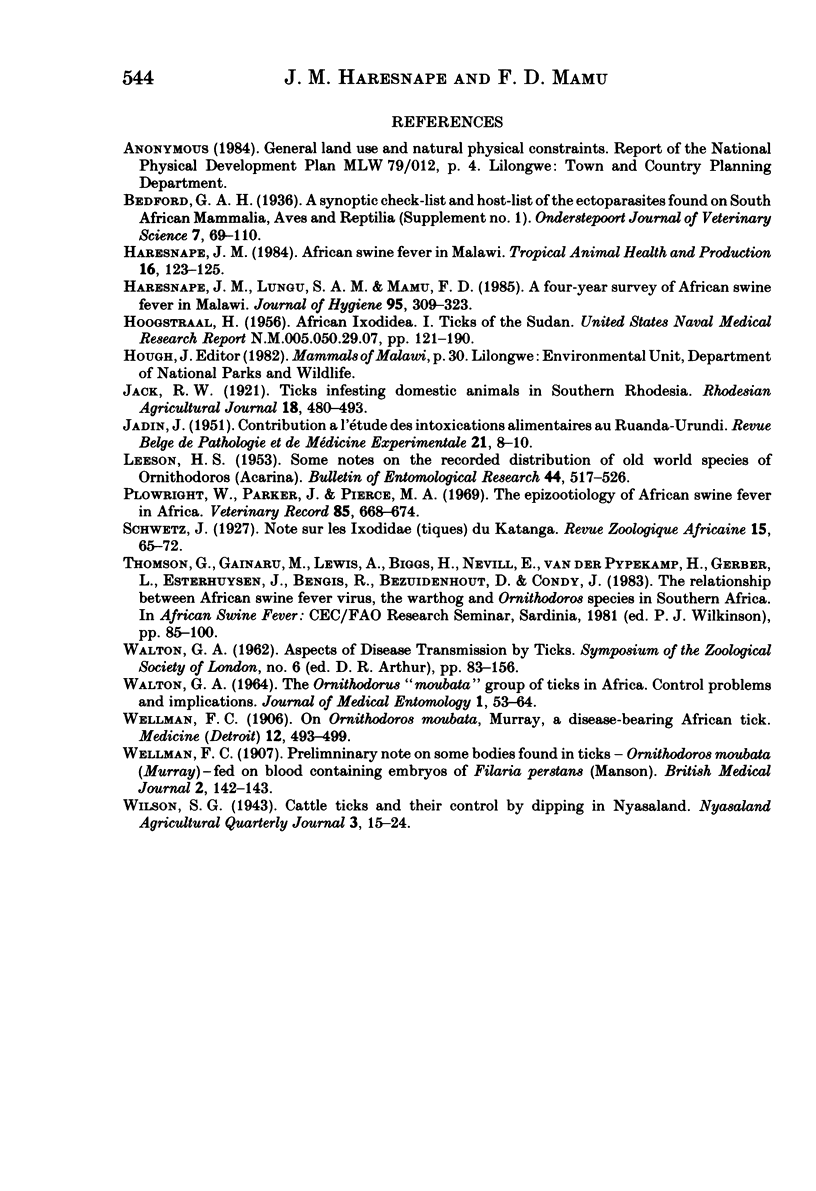
Selected References
These references are in PubMed. This may not be the complete list of references from this article.
- Haresnape J. M. African swine fever in Malawi. Trop Anim Health Prod. 1984 May;16(2):123–125. doi: 10.1007/BF02239857. [DOI] [PubMed] [Google Scholar]
- Haresnape J. M., Lungu S. A., Mamu F. D. A four-year survey of African swine fever in Malawi. J Hyg (Lond) 1985 Oct;95(2):309–323. doi: 10.1017/s0022172400062732. [DOI] [PMC free article] [PubMed] [Google Scholar]
- Parker J., Plowright W., Pierce M. A. The epizootiology of African swine fever in Africa. Vet Rec. 1969 Dec 13;85(24):668–674. [PubMed] [Google Scholar]
- WALTON G. A. THE ORNITHODORUS "MOUBATA" GROUP OF TICKS IN AFRICA. CONTROL PROBLEMS AND IMPLICATIONS. J Med Entomol. 1964 Apr;1:53–64. doi: 10.1093/jmedent/1.1.53. [DOI] [PubMed] [Google Scholar]


